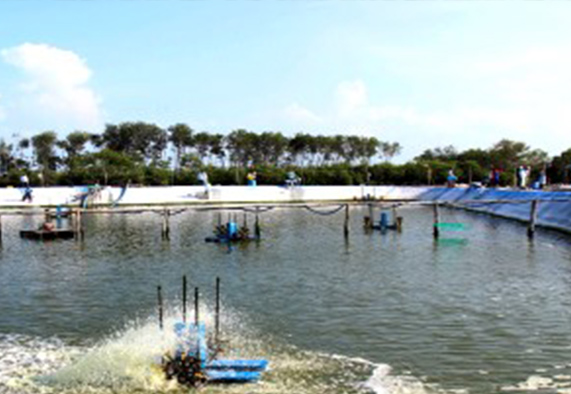The Pacific white leg shrimp Litopenaeus vannamei is the most frequently cultured shrimp species, comprising more than 70% of the world shrimp commodities since 2010. Shrimp indoor and outdoor aquacultures are affected by water quality deteriorations and bacterial diseases. Although these cultivation problems lead to a substantial annual loss of shrimp harvest, a systematic assessment of how the interaction of physicochemical water parameters and the composition of bacterial communities (commonly referred to as microbiome) is affecting disease prevalence is still lacking.
In this project, outdoor shrimp ponds in Indonesia were monitored over the complete rearing cycle of three months, including a disease outbreak after approximately 60 days. Of specific interest were bacteria of the genus Vibrio, which contain known shrimp pathogens. These bacteria thrive in organic matter-rich environments, where they often exhibit a particle-attached lifestyle. In shrimp ponds deteriorating water conditions, such as organic matter enrichment and decreasing pH, may cause detrimental shifts in bacterial community composition and promote the growth of Vibrio. These can cause infections, which are intensified when the shrimp feed on Vibrio-containing particles suspended in the pond water. However, bacterial communities will recover to the initial composition if water quality is adjusted to pre-disease conditions.
To improve shrimp farming practices, we therefore propose to perform regular pond water assessment, not only for the physicochemical parameters, but also for bacterial community composition, especially on particles. In addition, organic matter (sludge) discharge and regular addition of lime stones to sustain pH levels are necessary to improve and maintain shrimp production.
Project Partners |
|---|
|
SME Mandalika Agung SME Sokowati Indonesian Institute of Sciences (LIPI) |





